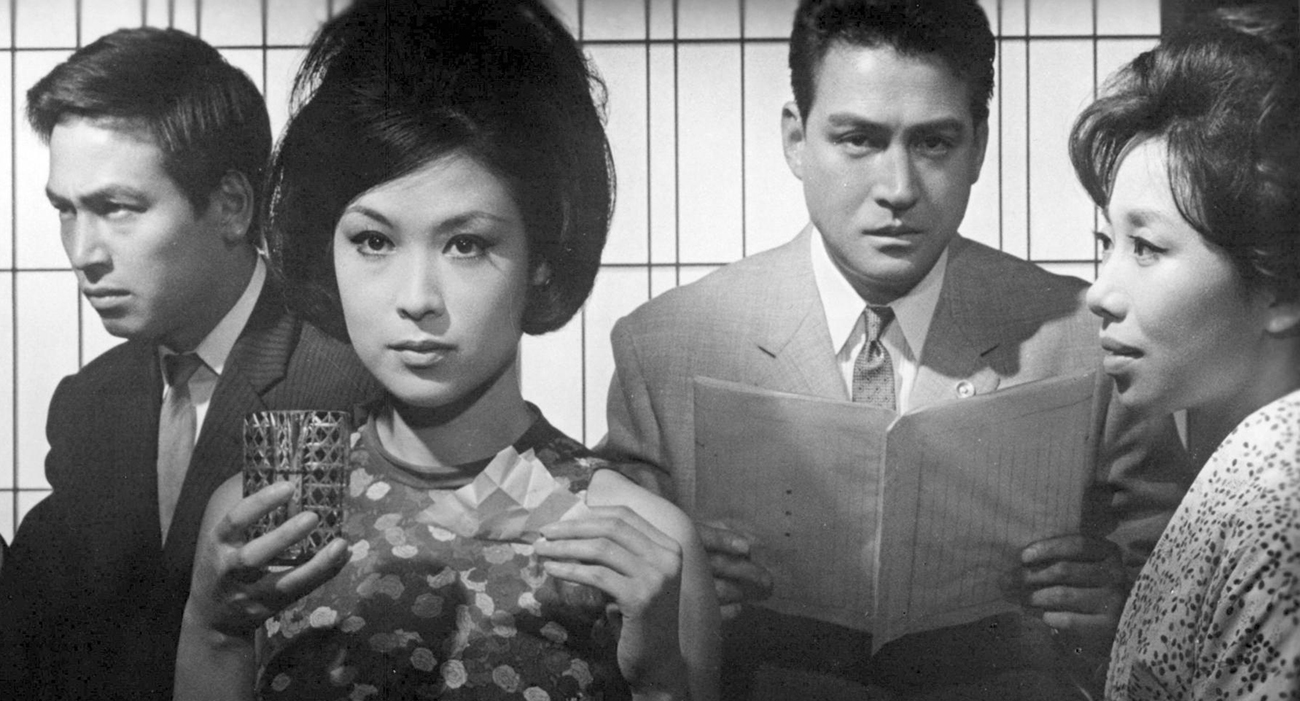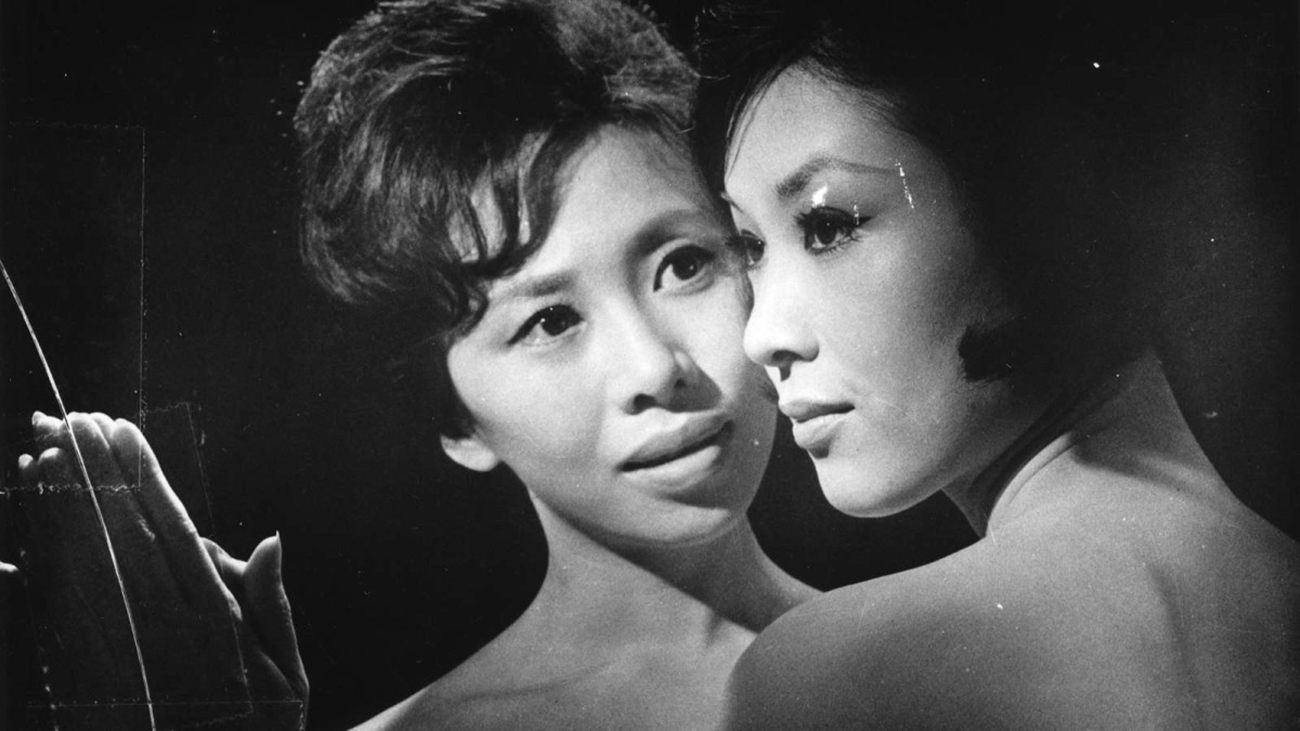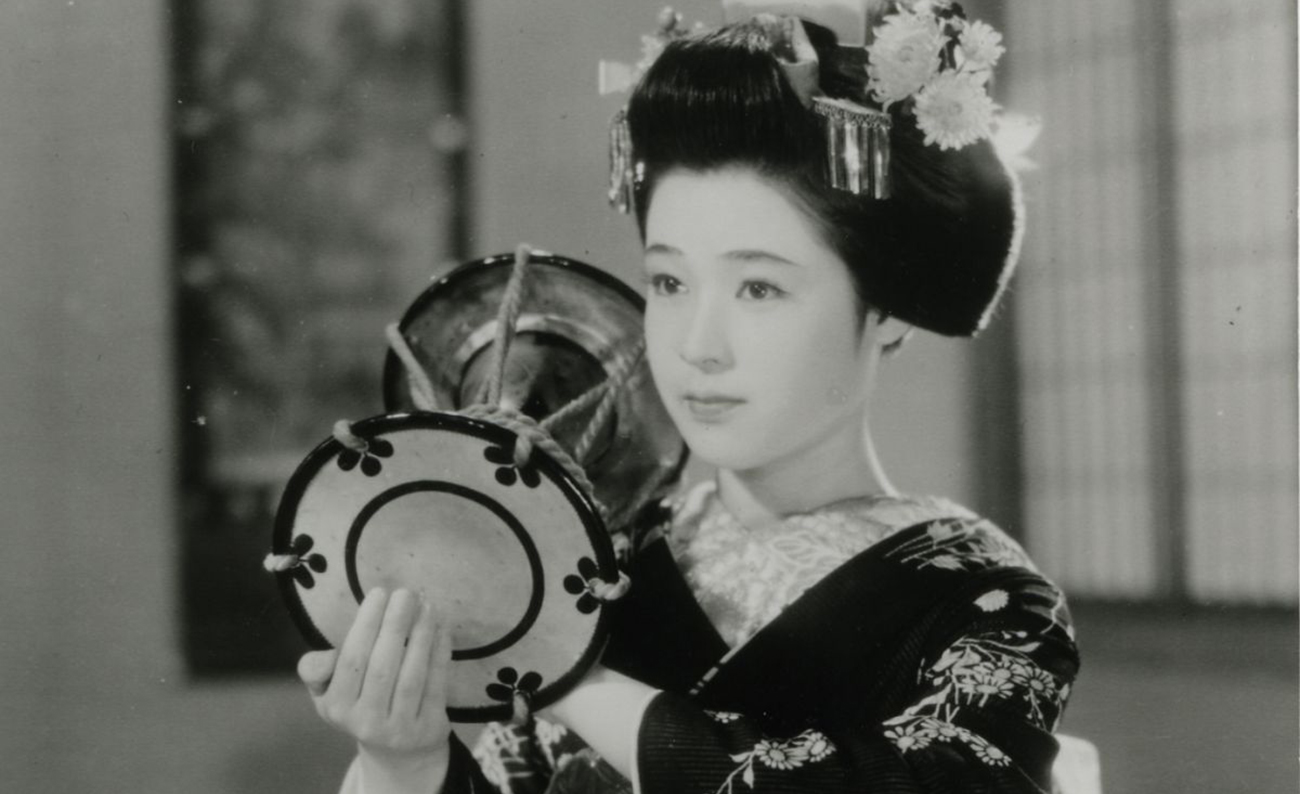Written for Japanese Film Festival 2018 in Australia. Filmed in Ether is a proud media partner of JFF 2018.
Japanese cinema has historically provided fascinating depictions of defiant women on screen.
This year’s JFF Classics Program, now screening until October 31 2018 at The Art Gallery of NSW in Sydney and November 22 – December 2 2018 at Australian Centre for the Moving Image in Melbourne, showcases a selection of iconic works in the ‘defiant women’ genre.
Under the theme ‘Passion & Obsession’, the program features films by master directors of Japanese Golden Age and New Wave cinema, adapted from the works of celebrated Japanese authors. Of particular interest in terms of their leading female characters are two films starring Ayako Wakao, a defiant actress in her own right: Manji: The Goddess of Mercy (1964) and A Geisha (Gionbayashi) (1953).
With Manji, its depiction of the passionate and destructive love affair between two female socialites flouted every single rule and convention of respectable Japanese society. Manji is one of 25 collaborations between director Yasuzo Masumura and Wakao. On the other end of the tonal spectrum is A Geisha (1953), directed by the great Kenji Mizoguchi (who offered the work as a remake of his own 1936 film, Sister of the Gion. Both films depicted the relationship between an older, respected geisha and her younger rule-breaking maiko (apprentice geisha) sister. 1[1] Eiko and Miyoharu are referred to as ‘sisters’. When a senior geisha takes on a maiko, she becomes the mentor and teaches the maiko everything about being a geisha. They are bonded ceremonially as sisters and often take on their sister’s name. For example, Eiko’s geisha name is “Miyoei’, derived from Miyoharu’s own name.
While Manji and A Geisha depicted women of entirely different social backgrounds and economic situations, they shared a similar theme: women defying social structures in a seemingly hopeless pursuit of passion, independence and dignity.
Passion, Choice and Individualism
The women of A Geisha and Manji are complex in that their narratives present them as passionate and unique. Their choices further establish them as individualistic in nature as opposed to archetypes which majority of films still fall into the trap of to this day, when it comes to their female characters.
Geishas are artists and entertainers who are also expected to be objects of beauty and fascination for their male clients. The traditional geisha system expected geisha to always put the client and the okiya 2[2] Okiya: Literal translation: “lodging house”. An establishment where maiko and geisha start off their careers living and training. Usually translated as geisha house. they belonged to first, never themselves. In A Geisha, however, Eiko is a maiko who was raised outside the system. This distinction makes her different from other maiko who are raised within the system from a young age and do not question the traditional ways. During her training, she is outspoken towards her teacher and asks about her right to reject unwanted sexual advances from clients. She speaks out against danna 3[3] Maiko: Literal translation: “woman of dance”. Apprentice geisha, under the age of 20. relationships after she learns her friend is unhappy, but has no choice but to accept an old man as her danna because she is obligated towards her okiya. 4[4] Danna: A man that pays for all the expenses of the geisha; often defined as a ‘patron’. The relationship between a geisha and danna is not inherently sexual or even personal. The expenses of a geisha are extremely high, so the men were often very wealthy and powerful.
Miyoharu, the other lead character, turns down a marriage proposal at the start and initially rejects Kanzaki, a powerful man who wants to be her danna and sleep with her. She does this even though Madam Okimi the most powerful ochaya [5] mistress wants her to have a relationship with Kanzaki. Mizoguchi shows with Miyoharu that given the choice, she has her own mind and would choose not to submit and put herself first, risking the relationship she has with Madam Okimi and turning down a powerful patron.
In Manji, passion is what drives Sonoko and Mitsuko’s choices. Sonoko is initially presented as the archetypal dutiful wife. But very early on in the film, she argues with the principal of her art school (male, older) in front of an audience, setting the tone for her actions and choices in the film. She desires a life where she is free, and to creatively express herself. This is why she initially takes up art lessons and meets Mitsuko, who becomes the catalyst that unleashes that part of her for better or worse. When she fights with her husband over Mitsuko she declares, “You lack passion! You have no romance.”
After Mitsuko ensnares Sonoko and Kotaro (Sonoko’s husband) into her tangled web with Watanuki (Mitsuko’s fiance), she refuses to choose between her lovers and revels in their obsession with her. “She says she must have you both, and that she’ll never give you up,” Watanuki says. For Mitsuko, her lovers’ passion for her is her power over them. Her choices are manipulative and self-destructive, but they are her way of having a semblance of agency in her own life.

Women fighting their confined worlds and assigned roles
Both A Geisha and Manji’s cinematography highlight the confined worlds in which women inhabit. Unlike the cinematic worlds of Ozu and Kurosawa that are wide and open, including Ozu’s signature ‘pillow shots’, we are meant to feel stifled in Manji and A Geisha. The worlds of Manji and A Geisha are enclosed in Sonoko’s house (the film almost exclusively takes place in her rooms), the elegant but cramped ochoyas and narrow claustrophobic streets of the hanamachi 5[6] Hanamachi: Literal translation: “flower town”. A Japanese geisha district, where okiyas and ochayas along with other establishments for geisha could be found, and where geisha live and work exclusively. in A Geisha. In both films, the camera often focuses on a single woman’s face, tightly framing the two women to either highlight their inner world or stress the nature of their world with voyeuristic-like shots through curtains and over-the-shoulder shots to show how restrictive and oppressive a woman’s world can be. The frenetic editing in Manji only enhances this feeling of claustrophobia.
Masumura’s direction in Manji is very much from a male perspective: while he gives his audience two extremely fascinating, complex female characters, he also struggles with portraying them in a ways that exist outside of male fantasies, especially with Mitsuko. Conversely, this is also useful because through Masumura’s direction we see how men distill women into a very limited and horrific dichotomy: the whore and the madonna.
Mitsuko is the whore: she is young, beautiful and sexually desirable. Ironically, Mitsuko is seen through the eyes of Sonoko first as a goddess. She is placed on a pedestal by both Sonoko and the men she draws into her web. Here, three lovers view her as both whore and goddess, a dangerous combination. Goddess-like worship is unhealthy and cancels out seeing women as human and flawed and removes any agency they have, added to the lack of respect because they view her also as a debased “whore”. The depiction of her as the Goddess of Mercy is also a stroke of dramatic irony, and Mitsuko will use the way she is viewed and worshipped in manipulating her three lovers mercilessly to an ultimately tragic fate.

Sonoko is very much like the Izumi of Sion Sono’s Guilty of Romance in the way she chooses to go to hell with whatever freedom of choice she can have over a life of mundanity. She initially plays the part of a respectable Japanese wife (the madonna) but upends her role when she gives in to her own sexuality, and her desire for Mitsuko. She becomes less meek, becomes dissatisfied of her life as a dutiful, submissive wife, and when her husband attempts to halt her relationship with Mitsuko, she gets into a huge fight with him, declaring “I’ve no wish to be bound! I want to be totally free!” In Manji, Mitsuko and Sonoko are allowed to be make very bad decisions, be greedy, selfish, cruel, manipulative, a direct inverse of what Japanese women are expected to be
In A Geisha, Eiko is set up as the archetypal pliant young muse, with Miyoharu as the demure and perfect established geisha. While Miyoharu has a gentle nature, we first see her berating and rejecting a man who wants to make her his wife. She understands that what he wants is control over her. This is something of a running theme throughout many of the classics in the programming this year, but especially prominent in the geisha films and Manji. When the men declare that they want the women as their wife, what they really want is a woman to submit to him for life.
This first scene of Miyoharu is therefore very powerful. She turns him down because he has not paid his debts. But besides that, Miyoharu turns him down because she can. She is an independent and established geisha—she has already moved out from her okiya, meaning she has paid off her debt to her okiya and is in a fairly comfortable position as a geisha. She can choose her danna if she wants to. Geisha have to retire if they get married, which means no more income. So while being a geisha means she is shackled in some way to a deeply patriarchal system, Miyoharu is able to have some economic independence as a geisha and working woman and would rather work than become a wife, which is what most women were meant to aspire to.
The most climatic scene in A Geisha is a culmination of Eiko’s balking against the more oppressive parts of being a geisha. Throughout the film we see Eiko rejecting aspects of the geisha system, like taking on a danna, and asserting her right to reject unwanted sexual advances from clients. When Kusuda, a client who wishes to be her danna, tries to force himself on her, Mizoguchi cuts away. You initially assume the worst until it cuts to Miyoharu hears a scream and discovers that Eiko has fought back and bitten Kusuda in retaliation. Eiko’s act of self-defense gains even more power when she refuses to apologise to Kusuda in the following days after his hospitalisation. In an earlier scene, she asserts her right to reject unwanted sexual advances to a teacher, who deems such an act unthinkable, as with geisha, the client comes first. But Eiko is headstrong, defiant and will not be coerced into submission easily.
Female relationships and rejection of men 
Female relationships are a major theme in both Manji and A Geisha. The initial friendship in Manji turns into something more passionate and co-dependent and remains the backbone of the film, despite the love square with Kotaro and Watanuki. Sonoko and Mitsuko’s bond is founded on defiance over the rumors about them. It becomes a self-fulfilling prophecy when they do eventually begin an affair. Their relationship makes both of them bolder and more resistant to the men in their lives. Sonoko rejects her husband’s attempts to control her, daring him to hit her and knowing he won’t because of her money. Mitsuko rebels against her manipulative and controlling fiance Watanuki’s control through her relationship with Sonoko. Even though Mitsuko is entangled with the toxic and controlling Watanuki, her relationship with Sonoko can be seen as a way to assert control in her life. While all the relationships in Manji are extremely toxic, the one between Mitsuko and Sonoko comes closest to resembling something positive before it all goes to hell because of Mitsuko’s self-destructive nature.
When Eiko bites Kusuda in self-defense after he tries to force himself on her, the two sisters become exiled from the teahouses in the hanamachi and have all their engagements canceled. Nevertheless, Miyoharu sticks by Eiko and tries to salvage the relationship with Madam Okimi, who all geishas need to maintain a relationship with to work. Miyoharu recognises that Eiko only has an abusive uncle to go back to and a neglectful father if she fails as a maiko. She has come to care deeply for Eiko and wants her to have a better future. Miyoharu therefore sacrifices her dignity and submits to Kanzaki (the mid-level minister Madam Okimi wants as a customer and uses Miyoharu to secure) in hopes that Eiko can keep hers. Miyoharu believes that what Eiko did in self-defense is not wrong, but both women realise that society has yet to catch up with their idea of evolving sexual politics and women’s rights.
Mitsuko and Sonoko are Osaka socialites and have more choice than most women of their time. Sonoko and Mitsuko completely upend all expectations of a docile Japanese wife through their torrid love affair and self-destructive and manipulative tendencies. These two characters are unlike anything most people have come to expect or even been exposed to in Japanese cinema.
With Eiko and Miyoharu in A Geisha, economic independence is something they are struggling towards. Eiko chooses to be a geisha so that she will only need to rely on herself to survive, and break from abusive and neglectful men, not realising how many rules she will have to play by. And when she breaks them, both women are not in the economic position to survive on their own and have to eventually toe the line to continue working.

Catch ‘A Geisha’ and ‘Manji: The Goddess of Mercy’ alongside other classic features in the ‘Passion and Obsession’ program strand at this year’s Japanese Film Festival – Australia.
When women defy society’s rules, they are punished for it. Eiko and Miyoharu learning the hard way that they cannot hope to work as geisha unless they submit to men is a straightforward conclusion to their narrative. In Manji however, Mitsuko’s destructive and manipulative behaviour is direct trauma from her relationship with Watanuki. While it seems she is the one holding all the cards, her punishment comes at her own hand: her choosing her lover over making a respectable marriage flouts all rules for a semblance of choice. She only realises too late that her lover is a bad man. She spends the rest of the story trying to wrest back control and agency by manipulating others.
Manji and A Geisha show how destructive the expectations of women to be beautiful, docile and submissive can be. You can be a geisha struggling to make ends meet or a wealthy Osaka society lady and still struggle against the confines of those limited roles. Defiance, in all of its forms, is the only way. As Lucifer declares in Milton’s Paradise Lost. “Better to reign in Hell than serve in Heaven.”
All citations used in this article have been sourced from “Geisha, A Life” by Mineko Iwasaki, 2002, Atria Books
